Polar Capital Technology Trust plc (the "Company"): The Company is an investment company with investment trust status and its shares are excluded from the Financial Conduct Authority’s (“FCA”) restrictions on the promotion of non-mainstream investment products. The Company conducts its affairs, and intends to continue to conduct its affairs, so that the exemption will apply.
The Company is an Alternative Investment Fund under the EU's Alternative Investment Fund Managers Directive 2011/61/EU as it forms part of UK law by virtue of the European Union (Withdrawal) Act 2018.
The Investment Manager: Polar Capital LLP is the investment manager of the Company (the "Investment Manager"). The Investment Manager is authorised and regulated by the FCA and is a registered investment adviser with the United States' Securities and Exchange Commission.
Key Risks
- Investors' capital is at risk and there is no guarantee the Company will achieve its objective.
- Past performance is not a reliable guide to future performance.
- The value of investments may go down as well as up.
- Investors might get back less than they originally invested.
- The value of an investment’s assets may be affected by a variety of uncertainties such as (but not limited to): (i) international political developments; (ii) market sentiment; and (iii) economic conditions.
- The shares of the Company may trade at a discount or a premium to Net Asset Value.
- The Company may use derivatives which carry the risk of reduced liquidity, substantial loss and increased volatility in adverse market conditions.
- The Company invests in assets denominated in currencies other than the Company's base currency and changes in exchange rates may have a negative impact on the value of the Company's investments.
- The Company invests in a concentrated number of companies based in one sector. This focused strategy can lead to significant losses. The Company may be less diversified than other investment companies.
- The Company may invest in emerging markets where there is a greater risk of volatility than developed economies, for example due to political and economic uncertainties and restrictions on foreign investment. Emerging markets are typically less liquid than developed economies which may result in large price movements to the Company.
Important Information
Not an offer to buy or sell: This document is not an offer to buy or sell or a solicitation of an offer to buy or sell any security, and under no circumstances is it to be construed as a prospectus or an advertisement. This document does not constitute, and may not be used for the purposes of, an offer of the securities of, or any interests in, the Company by any person in any jurisdiction in which such offer or invitation is not authorised.
Information subject to change: Any opinions expressed in this document may change.
Not Investment Advice: This document does not contain information material to the investment objectives or financial needs of the recipient. This document is not advice on legal, taxation or investment matters. Prospective investors must rely on their own examination of the consequences of an investment in the Company. Investors are advised to consult their own professional advisors concerning the investment.
No reliance: No reliance should be placed upon the contents of this document by any person for any purposes whatsoever. None of the Company, the Investment Manager or any of their respective affiliates accepts any responsibility for providing any investor with access to additional information, for revising or for correcting any inaccuracy in this document.
Performance and Holdings: All data is as at the document date unless indicated otherwise. Company holdings and performance are likely to have changed since the report date. Company information is provided by the Investment Manager.
Benchmark: The Company is actively managed and uses the Dow Jones Global Technology Index (total return, Sterling adjusted) as a performance target. The benchmark is considered to be representative of the investment universe in which the Company invests. The performance of the Company is likely to differ from the performance of the benchmark as the holdings, weightings and asset allocation will be different. Investors should carefully consider these differences when making comparisons. Further information about the benchmark can be found at: https://www.spglobal.com/spdji/en/indices/equity/dow-jones-us-technology-index/#overview.
Third-party Data: Some information contained in this document has been obtained from third party sources and has not been independently verified. Neither the Company nor any other party involved in compiling, computing or creating the data makes any warranties or representations with respect to such data, and all such parties expressly disclaim all warranties of originality, accuracy, completeness, merchantability or fitness for a particular purpose with respect to any data contained within this document.
Country Specific Disclaimers
United States: The information contained within this document does not constitute or form a part of any offer to sell or issue, or the solicitation of any offer to purchase, subscribe for or otherwise acquire, any securities in the United States or in any jurisdiction in which such an offer or solicitation would be unlawful. The Company has not been and will not be registered under the United States Investment Company Act of 1940, as amended (the “Investment Company Act”) and, as such, the holders of its shares will not be entitled to the benefits of the Investment Company Act. In addition, the offer and sale of the Securities have not been, and will not be, registered under the U.S. Securities Act of 1933, as amended (the “Securities Act”). No Securities may be offered or sold or otherwise transacted within the United States or to, or for the account or benefit of U.S. Persons (as defined in Regulation S of the Securities Act). In connection with the transaction referred to in this document the shares of the Company will be offered and sold only outside the United States to, and for the account or benefit of non-U.S. Persons in “offshore- transactions” within the meaning of, and in reliance on the exemption from registration provided by Regulation S under the Securities Act. No money, securities or other consideration is being solicited and, if sent in response to the information contained in this document, will not be accepted. Any failure to comply with the above restrictions may constitute a violation of such securities laws.
Further Information about the Company: Investment in the Company is an investment in the shares of the Company and not in the underlying investments of the Company. Further information about the Company and any risks can be found in the Company’s Key Information Document, the Annual Report and Financial Statements and the Investor Disclosure Document which are available on the Company's website, found at: https://www.polarcapitaltechnologytrust.co.uk.



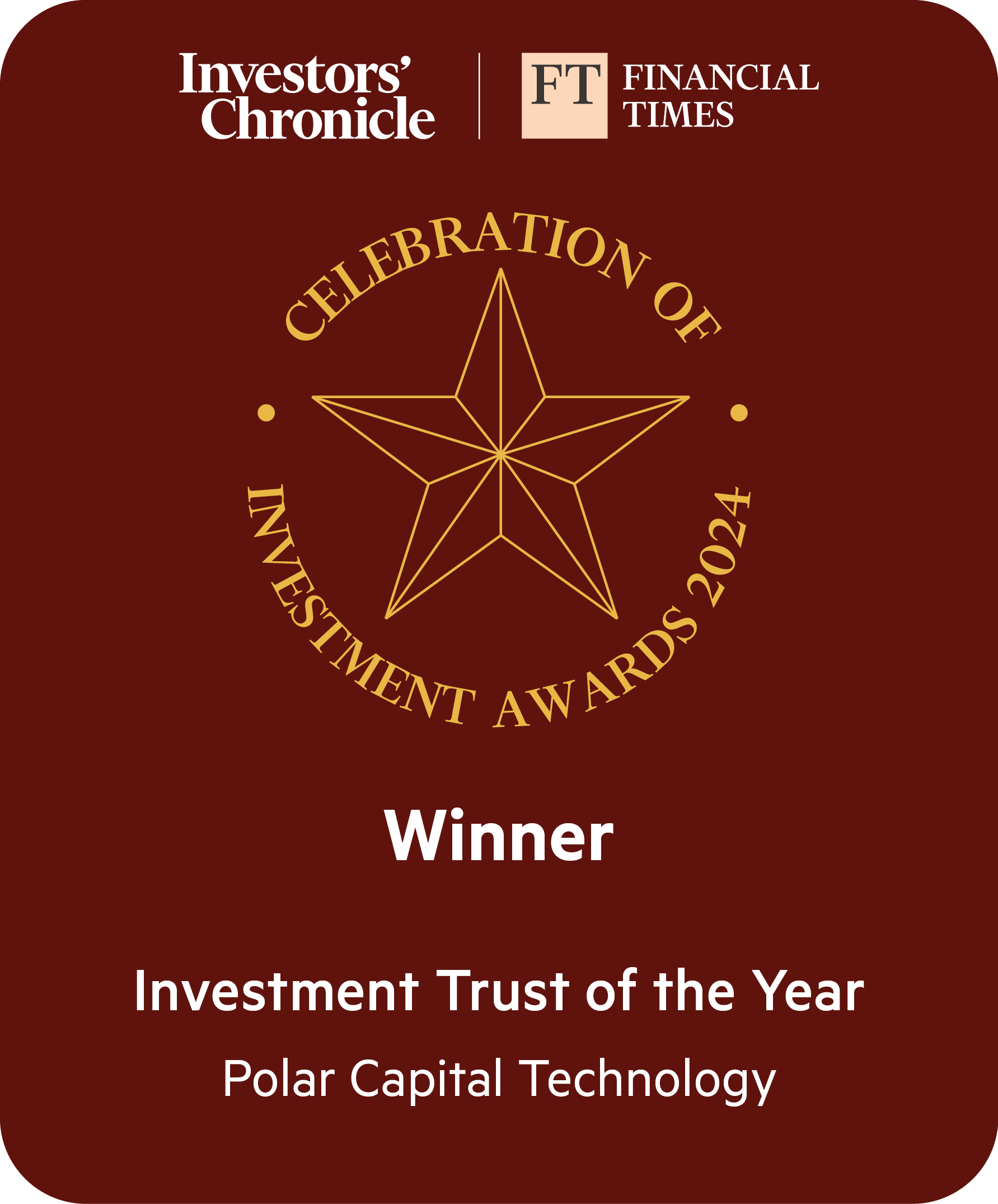
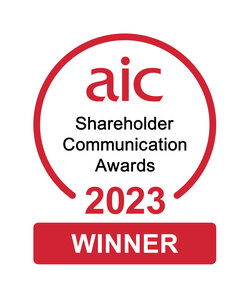
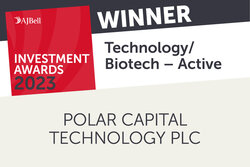
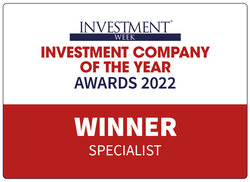
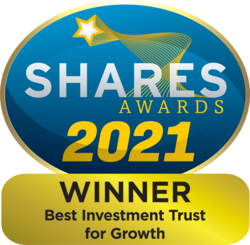


Fund Manager Commentary As at 28 November 2025
Key events
Market review
Equity markets finished November broadly unchanged, the MSCI All Country World Net Total Return Index declined -0.8% while the S&P 500 Index declined -0.6%. The DJ Euro Stoxx 600 index returned +0.9% (all returns in sterling terms).
This masked significant intra-month volatility with a sharp selloff (the steepest peak-to-trough decline in the S&P 500 since Liberation Day) followed by a strong month-end rally. Uncertainty over the path for US interest rates and a sharp correction in Bitcoin contributed to heightened investor angst; this saw the VIX, a measure of volatility, reach its highest level since April, 27.4, during the month before retreating to around 18 as fears subsided.
The selloff was driven in part by waning confidence in a December interest rate cut by the Federal Reserve (Fed), with Fed Chair Jerome Powell saying a December cut was “not a foregone conclusion”. Mixed consumer sector earnings reports, especially those related to the low-end consumer, also raised questions about economic conditions. However, rate cut odds soon surged back above 80% after several Governors’ comments supported an interest rate cut and delayed September jobs data showed unemployment had risen to 4.4%. Consequently, US equities rallied sharply over the final week of the month, ending higher for five straight sessions, and the S&P 500 posted a seventh consecutive monthly gain for the first time since 2021.
Despite more mixed recent messaging, we believe the setup for the US economy and market over the medium term remains positive with strong company earnings and lower inflation expected. Softer employment and lower-end consumption trends have, however, raised concerns about a ‘K-shaped’ economy (where high income and tech/AI-exposed areas flourish, yet lower income and non AI-exposed sectors struggle). While this has created some additional uncertainty over likely growth in 2026, we believe any softness ought to be offset by a strong fiscal impulse, accelerated depreciation and other initiatives in President Trump’s One Big Beautiful Bill Act, which is also likely to drive continued strength in AI capital expenditure (capex) supporting economic growth.
It was reported during the month that Kevin Hassett has emerged as the frontrunner to become the next Fed Chair. Hassett is reportedly Trump’s preferred candidate and his appointment would likely signal a Fed more supportive of lower rates in 2026. This prospect has added support to risk assets and equity markets.
In Europe, signs of progress on a US-brokered peace deal between Russia and Ukraine supported equity markets although no concrete agreement has yet been reached. Japan underperformed relatively as government bond yields spiked amid a significant fiscal stimulus package, as well as pushback from both the US and China following Prime Minister Sanae Takaichi’s rhetoric around Taiwan sovereignty.
Technology review
The technology sector lagged the broader market in November, with the Dow Jones Global Technology Net Total Return Index declining -3.8%. AI capex and financing concerns came to the fore, including fears about useful life assumptions for AI infrastructure, reducing depreciation costs. Investors also had to absorb shifting sentiment towards both the model and hardware providers, driven by a resurgent Alphabet following the successful launch of Gemini 3, which weighed heavily on stocks more closely tied to the fortunes of OpenAI including NVIDIA.
Large-cap technology stocks outperformed their small and mid-cap peers in the risk-off environment. The Russell 1000 Technology Index (large cap) and Russell 2000 Technology Index (small cap) returned -3% and -8.5% respectively. Returns also diverged at the subsector level. The Philadelphia Semiconductor Index (SOX) slipped -3.6% as AI capex results and commentary remained robust, while the NASDAQ Internet Index (QNET) and iShares Software (IGV) struggled, down -4.3% and -10.6% respectively.
November represented the software subsector’s worst monthly performance this year as the sector continued to derate. Microsoft (underweight (u/w)) lagged on subdued software sentiment and concerns around OpenAI’s competitive position and funding path. Most high-growth momentum stocks struggled, including Palantir Technologies and Cloudflare which suffered a minor outage, while financing concerns weighed on Oracle. The broader software sector, now down for the year (IGV: -1.7%) reflecting fears of AI disruption and seat-based business model risks have continued.
In the Semiconductor sector, NVIDIA reported another strong quarter, generating $57bn of revenue, +62% y/y, driven by its data centre segment, with compute +56% y/y, benefiting from the continued ramp of the company’s Blackwell architecture and networking growth (+162% y/y). Next-quarter guidance was also above expectations despite excluding revenue from China. Commentary on the company’s earnings call was confident on AI demand, pushing back hard on AI bubble fears and reinforcing long-term visibility. Answering concerns from some investors about customers extending the depreciable life of their chips, management stressed that its entire installed base remains fully utilised, demonstrating a long useful life and attractive total cost of ownership.
Advanced Micro Devices (AMD) also reported strong results, with revenue +36% y/y. Data centres benefited and revenue increased as its Genoa and Turin architectures for computer processing units (CPU) continued to take market share from Intel. Management expects the graphics processing unit (GPU) business to be strong again in Q4 and finish 2025 generating $6.5bn of revenue. While margins were in line, higher operating expenses ahead of major product launches tempered near-term operating leverage, although the medium-term outlook remains very positive.
Networking results were also strong, due to AI infrastructure demand. Lumentum Holdings’ revenue grew +58% y/y, driven by both the component and module businesses, and guidance was well above expectations, thanks to customer demand across the product portfolio. The company also has high exposure to Alphabet, so should benefit from its recent momentum. Coherent also reported a solid quarter, driven by continued strength in AI-related sales, as well as telecom.
Alphabet (u/w, but significantly increased exposure) performed well following the launch of its Gemini 3 model to strong reviews, demonstrating significant improvements in reasoning, speed and multimodal capabilities, and helping to restore confidence in the company’s vertically integrated AI strategy. Alphabet is also rumoured to be in discussions with Meta Platforms (Meta) about a potential multi-billion-dollar deal to deploy Google TPUs (tensor processing units) in Meta’s own data centres (starting as early as 2027), or to rent TPU capacity from Google Cloud as early as 2026. This follows a major TPU deal with Anthropic in October. The intensifying competitive pressure on OpenAI and reports that Alphabet has begun to commercialise TPUs externally at scale for the first time, weighed on SoftBank Group, Oracle, NVIDIA and other companies more exposed to the OpenAI supply chain.
Apple (u/w) rallied after reporting stronger than expected results and guidance at the end of October, as well as unverified reports that the company is in discussions with Alphabet to license a custom version of Gemini – a model with 1.2 trillion parameters – to support a major Siri overhaul. Apple’s capex is for now expected to remain $14-15bn for the next two years with no ambitions (so far) to build critical AI infrastructure. We remain underweight Apple as its current (minimalist) AI strategy risks the company becoming merely a spectator or passenger rather than a leading contender in the AI race. More prosaically, we are also concerned that sharply higher memory prices could impact margins or unit growth in 2026.
Outlook
Despite media focus to the contrary, we do not believe we are in an AI bubble. AI investment is large and growing quickly but only represents c1% of GDP (Gross Domestic Product), well below prior tech infrastructure peak buildouts (c2-5%). Furthermore, Generative AI is only three years old; earlier technology cycles have often taken 5-10 years (and some, decades) to play out. While AI-related stocks have been strong during the past three years, we believe this has largely been earnings-led rather than dominated by multiple expansion as was the case during the dot-com or pandemic periods.
That said, there are some pockets of excess which we believe are largely contained to private markets and/or retail and momentum stocks. More broadly, we characterise technology valuations as elevated rather than bubble-like and believe this is justified, reflecting superior growth prospects and some warranted AI premium. Bank of America’s Bubble Risk Indicator also suggests there is little sign of bubble-like instability in broad US equities or core technology.
AI capex spend looks to be underpinned by real usage curves: token consumption is doubling every two months and hyperscalers are capacity-constrained compared to the accelerating AI demand they see today, whereas in 2000 only 3% of fibre was actually lit. Furthermore, AI capex is mostly funded from the smartest companies on earth, with the strongest balance sheets and cashflow profiles. These companies also enjoy the best vantage point to assess the direction of future AI progress and are choosing to accelerate their AI investments. However, $100bn in hyperscaler investment-grade bond issuance so far this year and $150bn in private debt financing for AI data centres understandably brings further scrutiny and introduces modest leverage to the AI trade. That said, the hyperscalers are still expected to generate c$1trn in free cashflow from 2026 to 2028, as estimated by Empirical Research, which provides a more than ample buffer. Debt capacity is also far from being exhausted, according to Goldman Sachs.
Against this backdrop, we cannot help but wonder if the ‘default to bubble’ is more reflective of how difficult a year 2025 has proved for most active managers. We see the picture today as highly reminiscent of the mid-1990s when the internet (the last period of discontinuous technology progress) became more disruptive, challenging terminal values in the broader market and bifurcating performance between perceived ‘winners’ and ‘losers’. At that time, premature scepticism over the “irrational exuberance” of the internet cycle saw just 17% and 18% of active US funds outperform in 1997 and 1998 respectively.
Meanwhile, AI adoption continues to ramp with 62% of S&P 500 companies mentioning AI on their Q3 earnings calls, up from c45% at the start of the year. A regular McKinsey survey found 88% of organisations used AI in at least one business function in 2025, up from 50-60% each year from 2018-23. AI referrals are now converting at higher rates than non-AI referrals on retail sites, according to Adobe*. Rapid adoption will take time to show up in aggregate macro indicators, but the early signs are very encouraging. Anthropic found use of its Claude tool across 100,000 conversations reduces task completion time by c80% across a range of real-world uses. Extrapolating these estimates suggests that the current generation of AI models could increase US labour productivity growth by 1.8% per annum over the next decade – about twice the recent run rate.
Alphabet’s very successful Gemini 3 model launch during November confirmed that AI models are improving rapidly, with no signs of progress slowing. The performance of the TPU-trained Gemini model has also created short-term noise around the supremacy of NVIDIA's GPU-based ecosystem on which other foundation model providers largely depend. This has been reflected in recent market moves with NVIDIA shares and related suppliers lagging relative to strength in Alphabet, TPU designer Broadcom and associated supply chain partners.
We are certainly encouraged by the performance leap of Gemini 3 which should also give investors more confidence into continued AI productivity/return on investment tailwinds in 2026. The Trust benefitted during the month from a significantly increased, but still slightly underweight, Alphabet position. While Alphabet has taken the lead, the ‘AI race’ feels alive and well; we expect to see the first new AI models trained on NVIDIA Blackwell from OpenAI, Meta and Grok to regain performance leadership in H1 2026. New models from China are likely to play a contributing role too.
Our base case is that despite inevitable macro challenges, neither the economy nor the Fed’s response to it will be sufficiently bad to derail the AI story, where recent fundamental data points have been very supportive: Gemini 3 suggests scaling laws remain intact, NVIDIA’s strong results and guidance and supportive data points from Asian supply chains suggest further upside to AI infrastructure investment. Furthermore, investors generally remain sceptical of the AI trade, underappreciating potential upside risks and underexposed should they materialise in 2026. We remain extremely excited by the potential for AI to reimagine industries and redistribute profit pools – as it is becoming increasingly clear in the actions and commentary of early non-tech AI adopters which are held in our Polar Capital Artificial Intelligence Fund. We believe we are still early in the buildout of AI infrastructure and at the very beginning of AI’s application to solve real world problems, with a huge opportunity for active managers who are early to comprehend the investment implications of the transformation.
While the year has been an exciting for one for AI-first investors, we believe it has only offered a glimpse of AI’s potential. For those hoping that a difficult 2025 for non-AI stocks proves an aberration, our mid-1990s parallel suggests this may prove wishful thinking.
Wishing you all Seasons Greetings and a happy and healthy 2026.
* not held/sold
Ben Rogoff
Ben joined Polar Capital in May 2003. He is lead manager of Polar Capital Technology Trust plc and is a Fund Manager of the Polar Capital Global Technology Fund and Polar Capital Artificial Intelligence Fund.
Alastair Unwin
Alastair joined Polar Capital in June 2019 as a Fund Manager. Prior to joining Polar Capital, Alastair co-managed the Arbrook American Equities Fund. Between 2014 and 2018 he launched and then managed the Neptune Global Technology Fund and managed the Neptune US Opportunities Fund. Prior to Neptune, Alastair was a technology analyst at Herald Investment Management.
Historical Fact Sheets